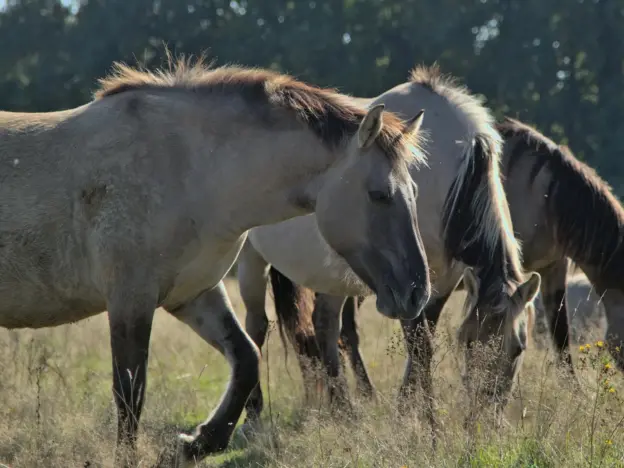Intro
There have been several attempts to recreate the ancient (and actually wild) Tarpan, notably the Heck and Hegardt Horses.
Origins
The Tarpan was among the few wild equines that existed during prehistoric times and they are thought to be ancestors of most modern breeds from the Russian Steppes. Originally they were found throughout eastern Europe and Western Russia, becoming foundation stock for many civilizations along the eastern Mediterranean.
They were hunted to extinction, mainly because land was needed for farmers and wild herds used up precious resources, they were also hunted as a source of meat. The last one died in a Russian zoo in 1909.
Bringing Them Back
Early in the 20th century an attempt was made by the Polish government to recreate the breed, using Konik horses and local animals with similar characteristics. They used selective breeding to recreate the genetics as closely as possible.
Not long afterwards, Heinz and Lutz Heck, zoologists and directors of the Munich Zoo also took on the project. They used Konik horses, but bred them with dun Icelandic Horses and Przewalski animals. Konik and Icelandic animals are likely to have some level of Tarpan genetics and Equus ferus przewalskii is another ancient, wild strain.
They were able to somewhat faithfully recreate the physical characteristics of breed, however never found a genetic match. Not quite able to reproduce the primitive mane of an Equus ferus caballus. Sometimes Heck Horses are called Tarpan, but they are not the same genetically. Although this attempt probably came closest of the three to faithfully recreating the Tarpan genetically.
Later, in the mid 20th century, an Oregon breeder called Harry Hegardt made an attempt to recreate the Tarpan (called the Hegardt Horse) likely using Kiger Mustangs which run feral in Oregon and are known for their dun coloring.
Features
Average height 12.2 – 13.2 hands
Mane is not primitive
Physique
Head is large
Withers are low
Hindquarters are strong
Legs are robust
Hooves are strong
Traditional Colors
Always a shade of dun with primitive markings. Occasionally they can have white markings, likely an indication of domesticated horse in the bloodline.
Temperament
Calm, friendly and curious
Independent and stubborn
Intelligent and headstrong
Use
Riding horse
Light draft
